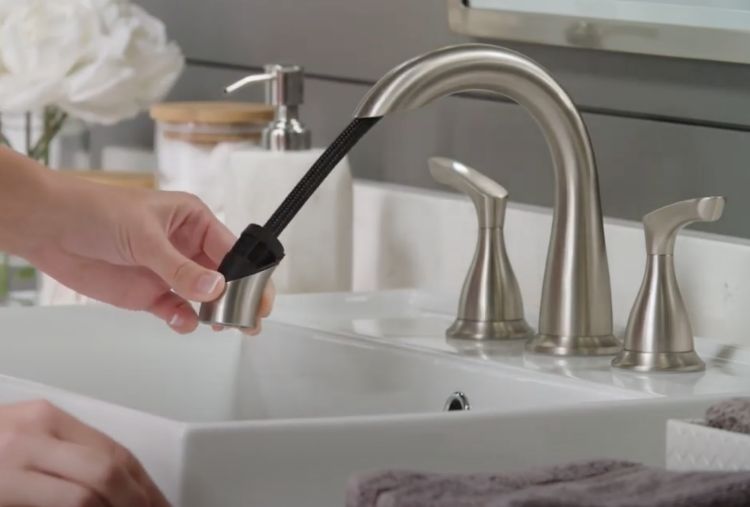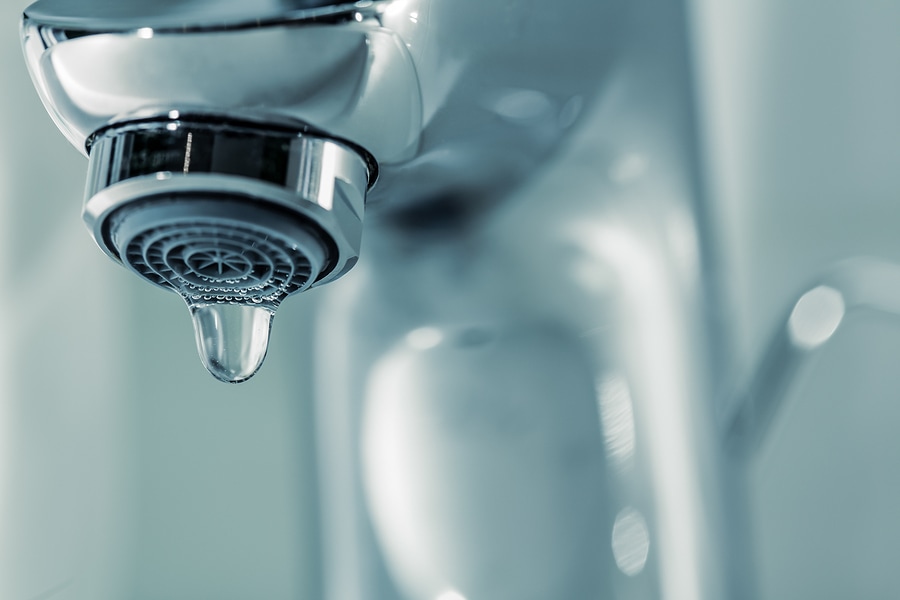Your Motives Behind Resolving a Dripping Faucet
Your Motives Behind Resolving a Dripping Faucet
Blog Article
Every person has their own rationale on the subject of Water Dripping from Faucet: Why and How to Fix.

Dripping faucets may feel like a small aggravation, but their impact goes beyond simply the annoyance of the noise. From drainage to sustaining unneeded economic prices and wellness dangers, neglecting a dripping tap can bring about numerous repercussions. In this short article, we'll delve into why it's essential to address this usual family problem promptly and properly.
Wastefulness of Water
Environmental Impact
Dripping taps contribute significantly to water waste. According to the Environmental Protection Agency (EPA), a solitary faucet dripping at one drip per secondly can waste greater than 3,000 gallons of water per year. This not just strains water sources but likewise influences ecosystems and wildlife depending on them.
Step-by-Step Guide to Taking Care Of a Dripping Faucet
Tools Needed
Prior to attempting to take care of a trickling faucet, gather the needed devices, consisting of an adjustable wrench, screwdrivers, replacement components (such as washing machines or cartridges), and plumber's tape.
Common Faucet Issues and Their Solutions
Determine the kind of tap and the certain concern creating the drip. Usual problems include worn-out washers, corroded shutoff seats, or defective O-rings. Refer to producer directions or on the internet tutorials for step-by-step guidance on repair work.
Financial Prices
Raised Water Bills
Beyond the ecological influence, leaking faucets can pump up water bills substantially. The accumulated wastefulness gradually equates into higher utility expenditures, which might have been avoided with prompt repair services.
Potential Residential Or Commercial Property Damages
Additionally, prolonged trickling can bring about damage to components and surfaces surrounding the tap. Water accumulation can trigger discoloration, rust, and even architectural issues if left neglected, leading to added repair work prices.
Health Worries
Mold And Mildew and Mildew Development
The consistent presence of wetness from a trickling tap creates an excellent environment for mold and mildew development. These fungis not just endanger indoor air high quality however likewise present wellness threats, especially for individuals with breathing conditions or allergies.
Waterborne Illness
Stagnant water in dripping faucets can come to be a breeding place for bacteria and various other virus, enhancing the danger of waterborne illness. Contaminants such as Legionella bacteria thrive in stagnant water, possibly causing major diseases when consumed or breathed in.
DIY vs. Specialist Repair service
Advantages and disadvantages of DIY Fixing
While some may try to take care of a dripping faucet themselves, do it yourself repair work feature their own collection of challenges. Without appropriate expertise and tools, DIY efforts can exacerbate the problem or result in insufficient repair services, prolonging the problem.
Advantages of Working With a Specialist Plumber
Hiring an expert plumber makes sure that the underlying source of the trickling tap is addressed efficiently. Plumbing technicians have the experience and devices to diagnose and repair faucet concerns successfully, conserving time and lessening the danger of additional damage.
Environmental Duty
Specific Contribution to Conservation
Taking obligation for repairing trickling taps lines up with wider efforts towards water preservation and environmental sustainability. Every person's activities collectively make a considerable impact on protecting valuable resources.
Lasting Living Practices
By focusing on punctual repair work and adopting water-saving habits, people add to sustainable living techniques that profit both present and future generations.
Safety nets
Regular Upkeep Tips
To prevent trickling faucets, do routine maintenance such as cleansing aerators, evaluating for leaks, and changing damaged parts immediately. Additionally, think about mounting water-saving devices or upgrading to extra efficient fixtures.
Value of Prompt Services
Dealing with leaking taps as quickly as they're seen avoids additional water wastefulness and possible damages, inevitably conserving both water and cash in the future.
Influence On Home Value
Perception of Well-Maintained Property
Maintaining a home in good condition, including dealing with maintenance concerns like leaking faucets, enhances its regarded value and desirability amongst possible purchasers or tenants.
Impact on Resale Value
Characteristics with well-maintained plumbing components, consisting of faucets, command greater resale values in the realty market. Resolving leaking taps can contribute to a favorable impression throughout residential or commercial property examinations and negotiations.
Verdict
Addressing a leaking tap goes beyond plain convenience; it's a necessary action toward saving water, minimizing economic costs, and protecting health and wellness and building. Whether via DIY fixings or professional support, acting to take care of trickling taps is a tiny yet impactful way to promote responsible stewardship of resources and add to a much healthier, extra lasting future.
Why Are My Faucets Dripping (And Can I Fix it Myself)?
Causes of a Dripping or Leaking Faucet
Whether you’re hearing drops of water falling and hitting a sink, or noticing water ooze out from the base of the spout, you shouldn’t ignore a dripping or leaking faucet. And, the good news is, sometimes you can fix the problem yourself.
In this article, we’ll review a few common causes of dripping and leaky. We’ll also walk you through some basic ways to find the problem and handle it without calling anyone — and let you know when to call in a pro.
But, no matter what the cause, or whether you can handle it on your own, the sooner you address it, the better.
Each drip may be a tiny amount of water. But, they all add up quickly. According to the U.S. Geological Survey, one faucet losing one drop every 20 seconds — five a minute — wastes around a liter of water every day, and 173 gallons a year.
Add in more than one in your house, and it’s a lot of water to waste. So, we’ll help you get to the bottom of things quickly.
Four Reasons Your Faucet May Be Dripping
Aerator is Damaged or Unseated Valve Seat is Corroded O Ring is Loose or Worn Out Part of the Assembly is Loose Aerator is Damaged or Unseated
If you unscrew the end of your faucet, you’ll find the aerator. It’s the little stem piece with a screen on it that shuts off the water circulation.
If it’s damaged, or if it’s not sitting right, it will allow water to pass through.
Valve Seat is Corroded
Next is the valve seat, which is connected to the washer. If the washer wasn’t in place correctly, then it could have ground against the seat. Over time, this damages the valve seat.
The problem could also be corrosion: Over time, the part has worn out, and it’s now allowing water to pass through.
O Ring is Loose or Worn Out
Since the o ring is only a small rubber gasket, it’s a common reason why the faucet is dripping. You’ll find it at the base of the faucet, and it’s there to keep water from coming out where it’s not supposed to.
However, it’s common for the o ring to wear out over time. When it does, you’ll notice a drip.
Part of the Assembly is Loose
So far, we’ve looked at a few small, specific parts. But, the problem could be anywhere in the assembly if something’s out of place.
Even if a part isn’t damaged, over time, it may have become loose or dislodged. It could be the parts we mentioned, or the aerator at the tip of the faucet, the stem itself,
Can I Fix a Leaky Faucet Myself?
Depending on the problem, and how handy you are, there’s a chance you can fix a leaky faucet without calling a professional. But, you do run the risk of making the problem worse.
If it’s a small drip, you can certainly try a few troubleshooting tactics. We’ll walk you through them in a moment.
But, no matter what, your first step should be shutting off the water coming into the faucet. You should find a shutoff valve under the sink on the pipes leading to it. Turn each one clockwise until they close tightly.
Next, make sure you have the right tools for whatever you’re attempting. It’s tempting to make do with what you have. But, you need the right ones for a reason: You’re often dealing with small parts that can break if you handle them carelessly.
If you’re feeling confident, here are some places to start.
Items Near the Tip of the Faucet
A few of the parts we mentioned — particularly the valve seat and washer — are located at the tip of the faucet where the water comes out. They’re easy to access, making it a good place to start.
Check the O Ring
To check the o ring, you’ll need to take off the spout at the base. It’s easiest on kitchen sinks with long spouts, versus the smaller, bulkier base on most bathroom sinks.
Either way, this can be tricky, so do it carefully and don’t force anything. If it’s not coming right off, you’re much better off calling in a pro than possibly breaking something.
For a kitchen sink, there’s usually a nut or coupling assembly at the base of the spout. These often slide off easily without using any tools.
Once you’ve disassembled those parts, gently but forcefully twist off the spout.
Then, you can see the o rings. There should be two of the rubber gaskets on the base. If they look worn or damaged, replace them, and see if that solves the problem.

I came across that blog posting on 4 Common Reasons for a Leaky Faucet when doing a lookup on the search engines. Make sure you take the time to promote this post if you appreciated it. Thanks a lot for taking the time to read it.
Report this page